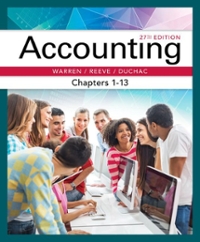Question
Case study 9.1 THE ETHICS OF EARNINGS MANAGEMENT The directors of almost any organisation, whether business, government, or nonprofit, must manage the organisation's external disclosures.
Case study 9.1
THE ETHICS OF EARNINGS MANAGEMENT
The directors of almost any organisation, whether business, government, or nonprofit, must manage the organisation's external disclosures. A common method of managing disclosures is to manage earnings. Because New Zealand applies substantially the same accounting standards to public and private organisations, public sector bodies can manage earnings in much the same way as businesses do. The ethical status of earnings management is controversial. Whether acts of earnings management are ethically justifiable depends essentially on management's intention either to be truthful or to mislead readers of the statements. This article looks at the ethics of income smoothing, which is one form of earnings management . . . The financial reports of the New Zealand Symphony Orchestra Ltd (NZSO) during the late 1990s provide a useful example of income smoothing. Based on the publicly available information contained in its financial statements, we can conclude that the income smoothing conducted by the NZSO in the late 1990s is informative and not misleading, and therefore is ethically justifiable. Through this example, we can see that income smoothing, which is a specific type of earnings management, is at least some times ethically justifiable.Organisations which depend on sponsorship and donations need to pay particular attention to their financial performance. If the organisation makes a loss, doubts about its management and viability may make contributors wary of committing further funds. But a big surplus is equally risky, because it shows that the management has not used all the resources available to it. Contributors may then decide that some of their money is no longer needed, and may direct their funds elsewhere. For most such organisations, then, the ideal result is a surplus which is so small as to be immaterial. The NZSO shows how this works. It has three major streams of revenue: concert sales, sponsorship and government funding. For the year ended 30 June 1998, these revenues were about $2.7, $1.4 and $8.9 million respectively. Like many other similar organisations, the NZSO's expenses are largely fixed, even before the start of the season. The concert programmes, the required orchestral forces, conductors and soloists and the associated costs are all set in advance. The main uncertainties about the success of a season concern the subscription and door sales revenue from its concerts. The financial year starts halfway through the concert season. By that time, the result for the first half of the financial year is nearly unalterable, and that for the second half depends largely on the attractiveness of the next season to subscribers and sponsors. For this reason, the NZSO has little opportunity to manage earnings, either by making discretionary accruals or by structuring real transactions in the short term. However, in the medium term, an unexpected cash surplus in one year (perhaps from a particularly successful concert) can be used up by providing extra services in later years, thus incurring an offsetting deficit. Notforprofit organisations are expected not to amass large surpluses, except to be used in future operations. By smoothing out reported shortterm surpluses and deficits, management may show that it has credible ways of using its resources in full, to break even over the medium term. As we suggested above, allowing a large surplus to be reported without smoothing may put the organisation's future revenue at risk.The ethics of earnings management
Questions
1.Why would the NZSO wish to smooth income?
2.Were the earnings management techniques the NZSO used ethical? Explain your answer.
3.What factors would you consider when determining whether such a decision was ethical?
(LO3, LO4 and LO5)
Step by Step Solution
There are 3 Steps involved in it
Step: 1

Get Instant Access to Expert-Tailored Solutions
See step-by-step solutions with expert insights and AI powered tools for academic success
Step: 2

Step: 3

Ace Your Homework with AI
Get the answers you need in no time with our AI-driven, step-by-step assistance
Get Started


